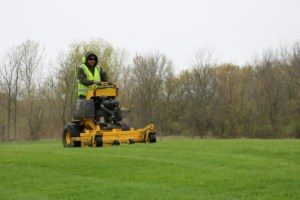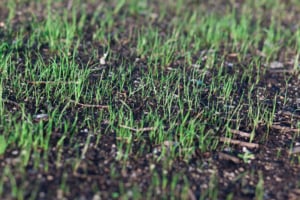Benefits of overseeding your lawn
We spend spring and summer constantly taking care of our lawn. We put down fertilizers, disease & insect control applications and lots of mowing occurs!
Seeding is an important part of the care of your lawn in the fall. Overseeding is the practice of applying new grass seed onto established turf grass. You may think this is only to be done for damaged areas or weak areas, but this is not so. As the grass plants age, they will lose some of their vigor. Overseeding allows seedling grass to fill in those damaged, thin areas while at the same time providing new plants within the older aging plants. A dense thick lawn holds up much better to the environment and foot traffic much better than stressed and aged lawns.
There are benefits to a lush densely packed lawn besides it looking good. A fuller lawn will prevent weeds and weed grasses from taking over your lawn. Another huge benefit to a dense lawn it the incredible benefit of erosion control. A dense lawn will keep water and soil where it should be.
There are many reasons why late summer and fall are superior to spring for planting grass.
The warmer soil temperature is great for seed germination and your germinating seeds will
also have less competition from weeds like crabgrass. In addition, once your grass begins to grow, the cool air of fall stimulates growth for these cool season grass varieties.
Preparing your lawn for overseeding:
- Begin by cutting your lawn between 2-3 inches high. Remove all grass clippings.
- Rake up dead patches to reveal as much of the soil as possible. Use a rake or rototiller (in larger areas) to break up the soil. This will help ensure a greater chance of germination.
- Apply a product like straw or peat moss to bare areas to help retain moisture and reduce seed loss.
If you’re interested in learning more about overseeding or our professional maintenance team take care of your lawn, give us a call, 847-623-3580.

